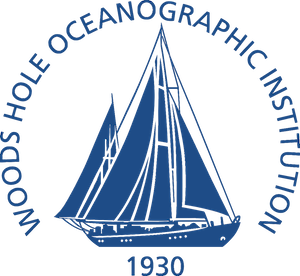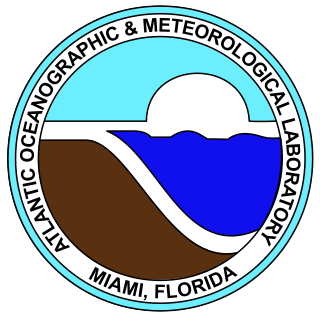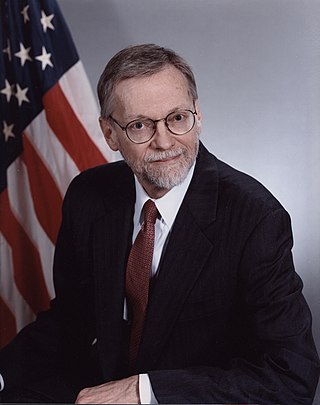Related Research Articles

The National Oceanic and Atmospheric Administration is a US scientific and regulatory agency charged with forecasting weather, monitoring oceanic and atmospheric conditions, charting the seas, conducting deep-sea exploration, and managing fishing and protection of marine mammals and endangered species in the US exclusive economic zone. The agency is part of the United States Department of Commerce and is headquartered in Silver Spring, Maryland.

The Woods Hole Oceanographic Institution is a private, nonprofit research and higher education facility dedicated to the study of marine science and engineering.
The Intergovernmental Oceanographic Commission of UNESCO (IOC/UNESCO) was established by resolution 2.31 adopted by the General Conference of the United Nations Educational, Scientific and Cultural Organization (UNESCO). It first met in Paris at UNESCO Headquarters from 19 to 27 October 1961. Initially, 40 States became members of the commission. The IOC assists governments to address their individual and collective ocean and coastal management needs, through the sharing of knowledge, information and technology as well as through the co-ordination of programs and building capacity in ocean and coastal research, observations and services.
The National Ocean Service (NOS) is an office within the U.S. Department of Commerce, National Oceanic and Atmospheric Administration (NOAA). It is the responsible for preserving and enhancing the nation's coastal resources and ecosystems along approximately 95,000 miles (153,000 km) of shoreline, that is bordering 3,500,000 square miles (9,100,000 km2) of coastal, Great Lakes, and ocean waters. Its mission is to "provide science-based solutions through collaborative partnerships to address the evolving economic, environmental, and social pressures on our oceans and coasts." The offices works with partnered agencies to ensure that the ocean and coastal areas are safe, healthy, and productive. Its projects focus on working to ensure the safe and efficient marine transportation, promoting the protection of coastal communities, conserving marine and coastal places. NOS employs 1,700 scientists, natural resource managers, and specialists in many different fields. The National Ocean Service was previously also known as the National Ocean Survey until it was renamed in 1983.
The National Oceanographic Data Center (NODC) was one of the national environmental data centers operated by the National Oceanic and Atmospheric Administration (NOAA) of the U.S. Department of Commerce. The main NODC facility was located in Silver Spring, Maryland, and consisted of five divisions. The NODC also had field offices collocated with major government or academic oceanographic laboratories in Stennis Space Center, MS; Miami, FL; La Jolla, San Diego, California; Seattle, WA; Austin, Texas; Charleston, South Carolina; Norfolk, Virginia; and Honolulu, Hawaii. In 2015, NODC was merged with the National Climatic Data Center and the National Geophysical Data Center into the National Centers for Environmental Information (NCEI).
The Nazi War Crimes and Japanese Imperial Government Records Interagency Working Group is a United States government interagency group, which is tasked with locating, identifying, inventorying, and recommending for declassification classified U.S. records relating to Nazi German and Imperial Japanese war crimes.

Oceanic and Atmospheric Research (OAR) is a division of the National Oceanic and Atmospheric Administration (NOAA). OAR is also referred to as NOAA Research.

The Atlantic Oceanographic and Meteorological Laboratory (AOML), a federal research laboratory, is part of the National Oceanic and Atmospheric Administration's (NOAA) Office of Oceanic and Atmospheric Research (OAR), located in Miami in the United States. AOML's research spans tropical cyclone and hurricanes, coastal ecosystems, oceans and human health, climate studies, global carbon systems, and ocean observations. It is one of seven NOAA Research Laboratories (RLs).
The Pacific Marine Environmental Laboratory (PMEL) is a federal laboratory in the National Oceanic and Atmospheric Administration (NOAA) Office of Oceanic and Atmospheric Research (OAR). It is one of seven NOAA Research Laboratories (RLs), established in 1973. The PMEL is split across two sites in the Pacific Northwest, in Seattle, Washington and Newport, Oregon.
The Environmental Science Services Administration (ESSA) was a United States Federal executive agency created in 1965 as part of a reorganization of the United States Department of Commerce. Its mission was to unify and oversee the meteorological, climatological, hydrographic, and geodetic operations of the United States. It operated until 1970, when it was replaced by the new National Oceanic and Atmospheric Administration (NOAA).
The Joint Ocean Commission Initiative is a bipartisan, collaborative group in the United States that aims to "accelerate the pace of change that results in meaningful ocean policy reform." The Joint Initiative was established by the members of two major U.S.-based oceans commissions: the Pew Oceans Commission and the United States Commission on Ocean Policy. It was originally co-chaired by former White House Chief of Staff Leon Panetta and former Chief of Naval Operations Admiral James D. Watkins, chairs of the Pew and U.S. Ocean Commissions, respectively. Currently, the Joint Initiative is led by a Leadership Council, which is co-chaired by Christine Todd Whitman, former EPA Administrator under President George W. Bush and former governor of New Jersey, and Norman Y. Mineta, Secretary of Commerce under President Bill Clinton and Secretary of Transportation under President George W. Bush.

Vice Admiral Paul Golden Gaffney II, USN (Ret.), was the seventh president of Monmouth University in West Long Branch, New Jersey, from 2003 to 2013, becoming president emeritus August 1, 2013.
The United States Global Change Research Program (USGCRP) coordinates and integrates federal research on changes in the global environment and their implications for society. The program began as a presidential initiative in 1989 and was codified by Congress through the Global Change Research Act of 1990, which called for "a comprehensive and integrated United States research program which will assist the Nation and the world to understand, assess, predict, and respond to human-induced and natural processes of global change."

Donald James Baker is an American scientist who was trained as a physicist, practiced as an oceanographer, and has held science and management positions in academia, non-profit institutions, and government agencies. He a former Under Secretary of Commerce for Atmosphere and Oceans and administrator of the U.S. National Oceanic and Atmospheric Administration (NOAA), and currently director, Global Carbon Measurement Program, William J. Clinton Foundation working with forestry programs in developing countries with the aim of reducing carbon dioxide emissions and at the same time helping alleviate poverty.

The Arctic policy of the United States is the foreign policy of the United States in regard to the Arctic region. In addition, the United States' domestic policy toward Alaska is part of its Arctic policy.
The Partnership for Observation of the Global Ocean (POGO), which was founded in 1999, is a consortium of major oceanographic institutions around the world, represented by their directors. POGO's goal is to promote global operational oceanography, the implementation of a Global Ocean Observing System, and the importance of ocean observations for society. As of 2023, POGO has 56 member organizations. The current chair is Prof. Nick Owens (Scottish Association for Marine Science, UK).

The Japan Agency for Marine-Earth Science and Technology, or JAMSTEC (海洋機構), is a Japanese national research institute for marine-earth science and technology. It was founded as Japan Marine Science and Technology Center (海洋科学技術センター) in October 1971, and became an Independent Administrative Institution administered by the Ministry of Education, Culture, Sports, Science and Technology (MEXT) in April 2004.

The Networking and Information Technology Research and Development (NITRD) program consists of a group of U.S. federal agencies to research and develop information technology (IT) capabilities to empower Federal missions; support U.S. science, engineering, and technology leadership; and bolster U.S. economic competitiveness.

JASCO Applied Sciences provides scientific consulting services and equipment related to underwater acoustics. JASCO operates from 7 international locations and provides services to the oil and gas, marine construction, energy, renewable energy, fisheries, maritime transport and defence sectors. The head office is located in Halifax, NS Canada. JASCO employs acousticians, bioacousticians, physicists, marine mammal scientists, engineers, technologists, and project managers.
Paula Susan Bontempi is an oceanographer who has led the use of satellites in marine science during her positions in NASA and as the dean of the Graduate School of Oceanography at the University of Rhode Island.
References
- ↑ "National Oceanographic Partnership Program – Promoting Partnerships for the Future of the Ocean, Coasts and Great Lakes". National Oceanographic Partnership Program. Retrieved 2017-10-04.
- ↑ "[USC10] 10 USC Ch. 665: NATIONAL OCEANOGRAPHIC PARTNERSHIP PROGRAM". uscode.house.gov. Retrieved 2017-10-04.
- ↑ "NOPP Projects Table – National Oceanographic Partnership Program". National Oceanographic Partnership Program. Retrieved 2017-10-04.
- ↑ "Argo Home | Argo Profiling CTD Floats". floats.pmel.noaa.gov. Retrieved 2017-10-04.
- ↑ "U.S. Projects | Marine Biodiversity Observation Network". U.S. Marine Biodiversity Observation Network. Retrieved 2017-10-04.
- ↑ "JASON Learning | Inspiring and educating students everywhere through real science and exploration". www.jason.org. Retrieved 2017-10-04.
- ↑ "National Ocean Sciences Bowl (NOSB)". National Ocean Sciences Bowl (NOSB). Retrieved 2017-10-04.
- ↑ "Marine Arctic Ecosystem Study (MARES) – Ecosystem Dynamics and Monitoring of the Beaufort Sea: An Integrated Science Approach – National Oceanographic Partnership Program". National Oceanographic Partnership Program. Retrieved 2017-10-04.
- ↑ Administration, US Department of Commerce, National Oceanic and Atmospheric. "DEEP SEARCH: DEEP Sea Exploration to Advance Research on Coral/Canyon/Cold seep Habitats". oceanexplorer.noaa.gov. Retrieved 2017-10-04.
{{cite web}}: CS1 maint: multiple names: authors list (link) - ↑ "Atlantic Deepwater Ecosystem Observatory Network (ADEON) – National Oceanographic Partnership Program". National Oceanographic Partnership Program. Retrieved 2017-10-04.
- ↑ "Bridge Ocean Education Teacher Resource Center". web.vims.edu. Retrieved 2017-10-04.